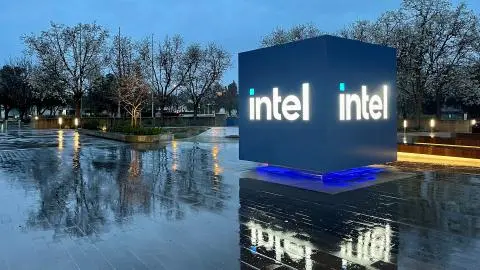Few names resonate as firmly in finance and investment as Intel Corporation. This tech giant has not only shaped the digital landscape but has also redefined what’s possible in the world of semiconductors. In this article, we’ll delve into Intel’s journey, highlighting its historical significance, current challenges, and future potential as viewed through the lens of Fintechzoom.
Intel’s Historical Significance
Intel Corporation impact on technology and finance is profound. From pioneering the microprocessor and x86 architecture to driving innovation in personal computing, Intel has been at the forefront of technological advancement. This legacy has established Intel as a stalwart in the tech industry and a compelling investment option for many.
Navigating Market Challenges
Despite its storied history, Intel faces challenges in the ever-evolving tech landscape. Competitors like AMD have emerged as formidable rivals, while the global chip shortage has added complexity to the semiconductor market. Intel’s ability to adapt to these challenges will be crucial for its future success.
Investment Considerations
Understanding Intel’s business model and market dynamics is key for investors. Intel’s stock performance is closely tied to its ability to innovate and compete in the semiconductor market. Evaluating Intel’s financial health and growth prospects is essential for making informed investment decisions.
Intel’s Role in Fintechzoom Innovation
Intel Corporation technology plays a crucial role in powering financial services in the Fintechzoom space. From secure transaction processing to high-frequency trading, Intel’s technology underpins many Fintechzoom innovations. Intel’s influence will likely grow as the financial sector becomes more digital and data-driven.
Future Outlook and Investment Strategy
Intel Corporation foray into new technologies like quantum computing and artificial intelligence could drive future growth. However, these endeavors also come with risks. Investors should carefully monitor Intel’s strategic decisions and their impact on its stock performance.
Key Takeaways for Investors
For Fintechzoom investors, Intel can be a valuable addition to a diversified portfolio. Its blend of technological innovation and financial stability can counterbalance more volatile stocks in the Fintechzoom space. Staying informed and monitoring Intel’s performance relative to the broader market is essential for maximizing investment potential.
Intel’s Competitive Landscape
In the fiercely competitive semiconductor industry, Intel faces a range of competitors vying for market share. Key rivals such as AMD and NVIDIA have challenged Intel’s dominance, particularly in the CPU and GPU markets. Despite this competition, Intel’s strong brand reputation and technological innovations continue to set it apart.
Intel’s Innovation Strategy
Intel Corporation commitment to innovation is a driving force behind its success. The company invests heavily in research and development to stay at the forefront of technological advancements. From advancements in chip design to exploring new technologies like quantum computing, Intel’s innovation strategy is critical to maintaining its competitive edge.
Intel’s Financial Performance
Investors and analysts alike closely scrutinize Intel’s financial performance. The company’s revenue, profit margins, and earnings growth are key indicators of its overall health. Despite facing challenges in recent years, Intel Corporation financial performance remains strong, reflecting its resilient business model and strategic focus.
Intel Corporation Supply Chain Management
Intel’s supply chain management is critical to its operations. The company works closely with suppliers to ensure a steady supply of raw materials and components. It also employs advanced technologies, such as predictive analytics, to optimize its supply chain and minimize disruptions.
Intel Corporation Corporate Social Responsibility
Intel Corporation is strongly committed to corporate social responsibility (CSR), with initiatives focusing on sustainability, diversity, and community engagement. The company’s CSR efforts benefit society and enhance its brand reputation and employee morale.
Intel’s Strategic Partnerships
Intel’s strategic partnerships play a crucial role in its success. The company collaborates with various partners, including technology companies, academic institutions, and government agencies, to drive innovation and expand its market reach. These partnerships enable Intel to leverage complementary strengths and accelerate growth.
Intel’s Regulatory Environment
Intel operates in a highly regulated industry governed by various laws and regulations. Compliance with these regulations is crucial for Intel to avoid legal issues and maintain its reputation as a responsible corporate citizen.
Intel’s Global Presence
Intel’s global presence is a crucial driver of its success. The company has a strong presence in key markets worldwide, allowing it to tap into diverse talent pools and customer bases. Intel’s global operations also help mitigate risks associated with regional economic fluctuations.
Conclusion: Fintechzoom Intel Stock: A Gateway to Financial Growth
Intel’s journey is a testament to the symbiotic relationship between finance and technology. As Intel continues to push the boundaries of innovation, investors can engage with a company that embodies the intersection of these two dynamic industries.
FAQs
The article provides an in-depth analysis of Intel Corporation, examining its role and impact in the tech industry from a fintech perspective. It explores Intel’s innovations, market strategies, and financial performance.
Intel Corporation is significant in the fintech world due to its advanced semiconductor technologies, which power a wide range of financial technologies, including high-performance computing systems and data centers.
Intel’s technology influences fintech developments by providing the necessary hardware infrastructure for processing vast amounts of financial data quickly and securely, enabling efficient and innovative financial solutions.
Readers can expect to learn about Intel’s strategic initiatives, recent advancements in their technology, and how these developments are shaping the future of fintech and financial services.
Yes, the article is written to be accessible to both tech enthusiasts and those with limited technical knowledge. It provides clear explanations of Intel’s role and impact in the fintech sector.



